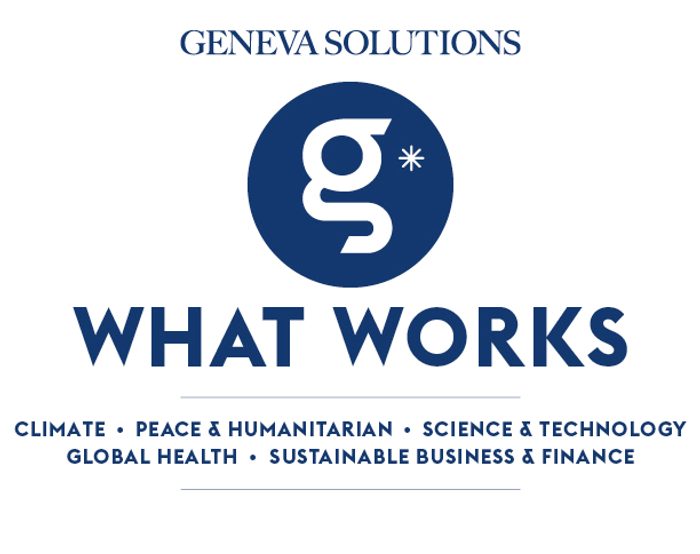Good morning, this is Michelle. Geneva took another step towards eliminating the world’s most toxic chemicals by agreeing to ban yet another pesticide – chlorpyrifos – even if a slew of last-minute caveats weakened the decision.
This signals an opportunity for eco-friendly pest solutions to gain credibility as alternatives, but regulatory and market hurdles persist. |

|

Zemenu Genet of PAN Ethiopia demonstrates the application of food spray on cotton crops, a biopesticide that attracts “good bugs” to control pests. (PAN Ethiopia)
|
|
Across Ethiopia’s hot, arid lowlands, a tiny yet destructive predator has plagued farmers for decades. The African bollworm, a voracious caterpillar, tunnels into cotton bolls, jeopardising the livelihoods of some 600,000 people, from smallholder farmers to crop field labourers to artisans and textile factory workers. Severe infestations have led in the past to devastating losses.
In recent years, with the support of environmental groups, farmers have enlisted fighters of their own. “People call them good bugs,” explains Tadesse Amara, co-coordinator of the Pesticide Action Network’s Ethiopian chapter, a global campaigning group promoting natural alternatives to synthetic farming inputs.
Since 2015, the group has helped farmers in south Ethiopia adopt a home-made concoction – containing yeast, maize kernels, soap and other ingredients– that attracts beneficial insects, like ladybirds and green lacewings, to feast on the bollworm.
This “food spray”, as it’s commonly known, is also proving useful against an even more insidious enemy – chlorpyrifos, a potent insecticide introduced in the 1960s by US-based Dow Chemical. Used to combat pests such as termites, mosquitoes and worms, chlorpyrifos quickly gained popularity – but it came at a cost.
Read the full story on Geneva Solutions.
|
|
|
🔮MODERN ALCHEMY.
Centuries after medieval pseudo-scientists dreamed of turning lead into gold, scientists at Cern have proven that all that is needed is a Large Hadron Collider (LHC) to convert the dull grey metal into the precious mineral.
According to the study published in Physical Review Journals, the experiment involves near-miss collisions between lead nuclei. As the ions whiz through the collider at nearly the speed of light, some avoid collision and continue to speed around the accelerator. Intense, brief pulses of light – created in the LHC's electromagnetic field – can tear protons from the lead nuclei and turn them into gold.
But despite gold prices being at historic highs, Cern won't be able to cash in on the precious metal. The gold nuclei only exist for a fraction of a second, before crashing and disintegrating into protons, neutrons and other particles.
|
|
⛑️EMPOWERING REFUGEES.
As aid organisations rethink humanitarian response, our colleagues at The New Humanitarian gather refugee rights experts, who say traditional relief systems have reinforced dependency among recipients.
Raouf Mazou, UNHCR’s assistant high commissioner for operations, admitted that people on the ground know best how aid should be best delivered to those in need. In a podcast, together with a Rohingya refugee activist and the founder of the Center for Transformational Change, Mazou tackles questions such as how long it will take for aid groups to cede decision-making to refugees and what is keeping the shift in decision-making from happening.
|
|
Here’s what else is happening
-
🚧Israel's aid blockade to Gaza ‘unacceptable’: Red Cross.
Pierre Krähenbühl, International Committee of the Red Cross director general, told Geneva journalists that the actions were “fundamentally against anything that international humanitarian law provides”.
AFP via France24 (EN)
-
⚕️WHO’s Samira Asma reportedly leaving Tedros’ leadership team – UNAids scraps merger plan.
The departure of the UN health agency’s assistant director of data, analytics and delivery, who is a former official of the US Centers for Disease Control, is part of a plan to reorganise departments and reduce the number of top executives.
Health Policy Watch (EN)
-
📦Trump’s aid cuts blamed as food rations stopped for a million refugees in Uganda.
The World Food Programme said that 80 per cent of rations have had to be cut as malnutrition rises to “critical levels” in the east African country hosting the continent’s largest refugee population.
The Guardian (EN)
-
🇮🇱US presses reluctant UN, allies to support Israel’s Gaza aid plan.
The UN relief agency, Ocha, rejected the plan after US government officials met with aid groups delivering assistance in the Strip. An additional meeting was to take place yesterday in Geneva.
Washington Post (EN)
-
📚Israel closes six UN schools for Palestinians in east Jerusalem.
The schools run by the UN Palestinian refugee agency, which was banned by Israel, were given 30 days to close.
Associate Press (EN)
|
|
GS news is a new media project covering the world of international cooperation and development. Don’t hesitate to forward our newsletter!
Have a good day!
|

|
|
Avenue du Bouchet 2
1209 Genève
Suisse
|
|
|
|








